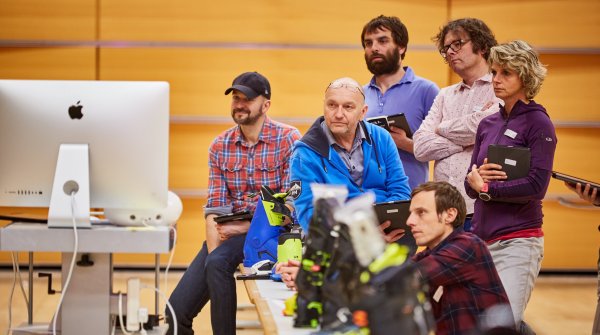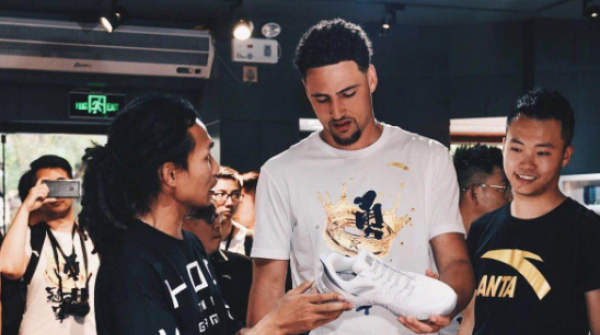
“ISPO Munich is and remains an important industry meeting place and a must for the Intersport world, as well. Munich is an ideal meeting place location for us,” says Kim Roether, and this was also true for both the meetings with one another and with the industry. Even though it’s less about orders, “we discuss central topics there,” Roether explains: “How is the market situation changing? What trends are headed our way? How is e-commerce evolving? Where is digitization heading? How is distribution being done?” There are panels and symposia, but also several smaller rounds of talks, on all of these topics at ISPO Munich.
“We need this benchmark once a year,” says Kim Roether, “and if you don’t want to participate in that anymore, it sends a bad signal.” This will also be emphasized to the sports industry. In view of the constant change and transformation in the sports business, urgent issues are on the agenda for Kim Roether. In an interview with ISPO.com, the CEO explains the milestones and most important tasks for Intersport in 2018.
What has Intersport stood for thus far, and where is the brand’s image set to go from here? “Reliable, trustworthy, highly competent, and with a fair price value,” is how Kim Roether describes end consumers’ perception of the Intersport brand thus far. Not bad attributes that would need to be shaken, “but maybe we also come across as a bit too conservative, and don’t seem attractive enough for the younger generation,” says the CEO, expressing his clear desire for an image change. “We want to become sexier, fresher, more modern. 2018 is going to be the year of the Intersport brand.”
They also want to make the brand more emotional. The CEO speaks of a “new look and feel” that’s also presented in a brand book for retailers, of a more modern-looking logo, of a fresher visual language with more storytelling. The claim “For the love of sports” remains. That is the drive for Intersport: Getting people moving out of love for sports. In view of these measures, Roether also announces a “shift in the marketing budget,” moving away from traditional media towards new media, and in the area of social media.
In Berlin, Intersport did “a great job in an enormous effort,” says Roether – and with the three “Future Stores” in the Alexa and Tegel-based “Hallen am Borsigturm” shopping centers, as well as the Potsdam “Stern-Center,” they’ve presented shop concepts for “what the retail of tomorrow can look like.” Anchoring the mega trends of the sports business in the customer landscape and making a stylish, user-oriented buying experience for the consumer with a modern, cross-channel sales concept that also integrates digital opportunities – that is the path Intersport want to successively roll out from Berlin.
Above all, Roether names the store in Berlin’s Alexanderplatz, “where we want to show retailers that it’s worth it to incorporate the digital worlds into the point of sale.” The core points: modern, digital screens and magic mirrors that enable a quick overview of all available models and colors, virtual reality, and above all the “goods hub” that links stores and their inventories beyond the local product range, with the goal of permanent goods availability for customers.

In general, Intersport differentiates its stores into the “blue world,” whose areas are largely based on system modules from the new store concept, and the “red world,” where retailers have more individual design freedom.
The challenge for the retail association is taking its members with them when changing to the retail organization and working out in a personal exchange which concept best suits which location. “One size fits all – that would be the wrong approach,” Kim Roether explains.
In an interview with ISPO.com, Kim Roether announces a “big conversation offensive” about how to improve the public image and emphasize the competence of the retailers. “We want to explain how we see the market and will actively approach our members.” To this end, a kind of “fitness check” for all retailers in the group will be presented in the second quarter. With this tool, each individual retailer can work out how their future path within the concept landscape will look, in exchange with the regional manager.
There’s going to have to be “more engagement in the blue and red worlds,” and those who want to become part of the “INTERSPORT-CI world” in the future will have to abide by the established common rules of the game. Roether: “Each retailer will have to know: ‘What will happen if I join in?’ Conversely, the head office will have to check the extent to which retailers are meeting the requirements. Kim Roether makes it clear: “If it has the Intersport label on it, it also has to have Intersport in it!”
The board chairman is aware that this will cause for discussions among the members. What’s more: “We need to face up to the market shakeout,” but that is precisely why the path being pursued now holds every opportunity open to members. “Those without a clear position in retail will become uninteresting for the consumer.”

With the appointment of the new Chief Digital Officer Carsten Schmitz at the end of 2016, Intersport CEO Kim Roether has also sent a clear signal in the direction of consistent transformation – “after we had to take a hard learning curve with our first solution.” The e-commerce business was completely redesigned, and the first successes are already visible: in the form of high acceptance even among potentially more critical merchants.
Kim Roether talks about a “fair offer” from headquarters that’s well received by members who follow the model of the “cooperative retailer platform.” This acceptance in B2B can be attributed to a “long waiting list” of the retailers who want to “get on board” and, in B2C, to “significantly more” page impressions and visits on intersport.de.” Roether is satisfied: The benefit is obvious. “Our customers perceive Intersport as a joint supplier online.”
After the pilot project was launched on the new platform in the middle of the year with a handful of select retailers, located near the Heilbronn headquarters and personally trained by headquarters’ digital unit, 65 retailers were already involved at the end of 2017. The goal for 2018: By the end of the year, 200 Intersport retailers will be represented on the central platform intersport.de.

 Sports BusinessSki Mountaineering Goes Olympic: What Milano-Cortina 2026 Means
Sports BusinessSki Mountaineering Goes Olympic: What Milano-Cortina 2026 Means
- ISPO awards
- Mountain sports
- Bike
- Design
- Retail
- Fitness
- Health
- ISPO Job Market
- ISPO Munich
- ISPO Shanghai
- Running
- Brands
- Sustainability
- Olympia
- OutDoor
- Promotion
- Sports Business
- ISPO Textrends
- Triathlon
- Water sports
- Winter sports
- eSports
- SportsTech
- OutDoor by ISPO
- Heroes
- Transformation
- Sport Fashion
- Urban Culture
- Challenges of a CEO
- Trade fairs
- Sports
- Find the Balance
- Product reviews
- Newsletter Exclusive Area
- Magazine





